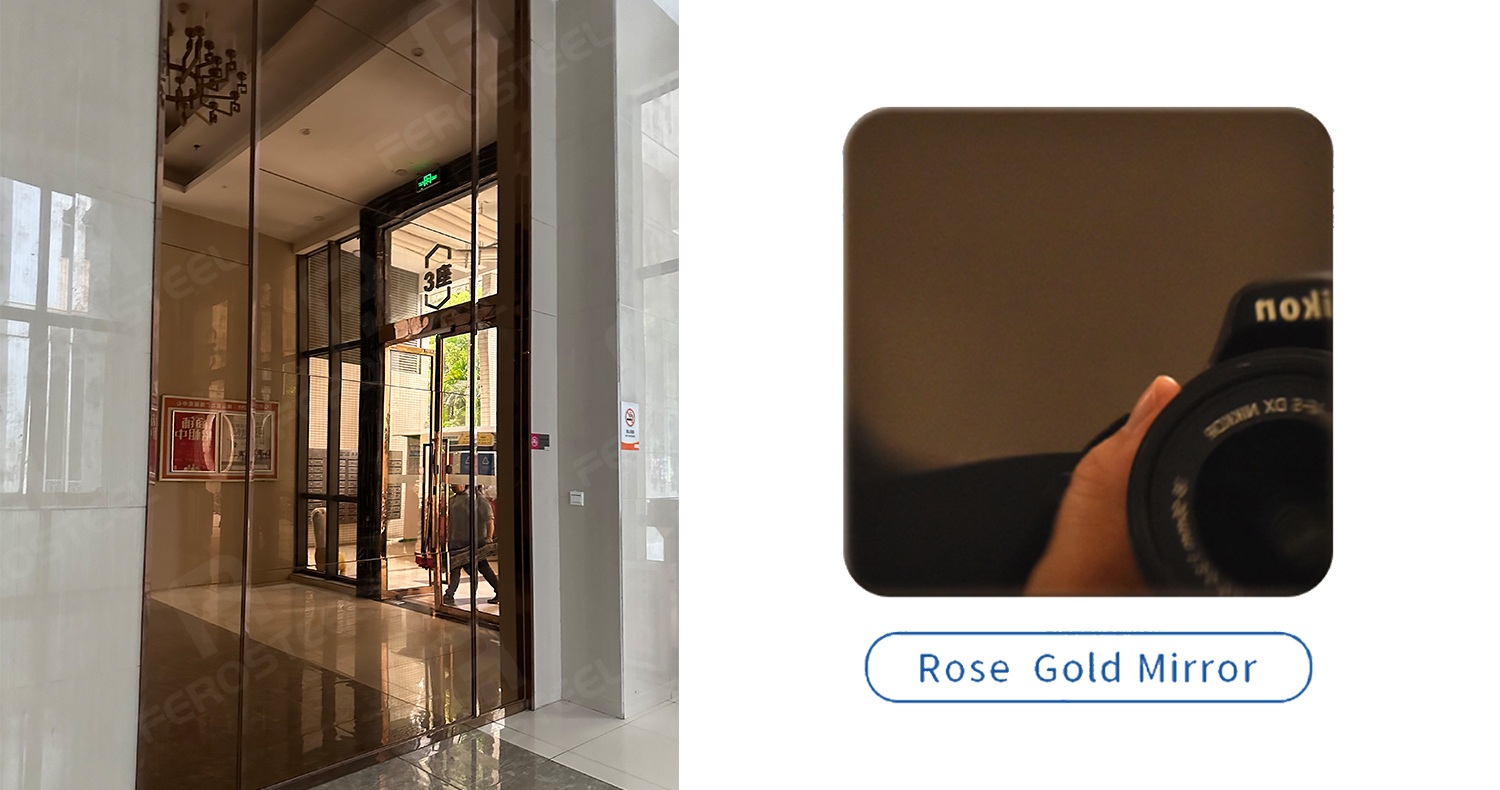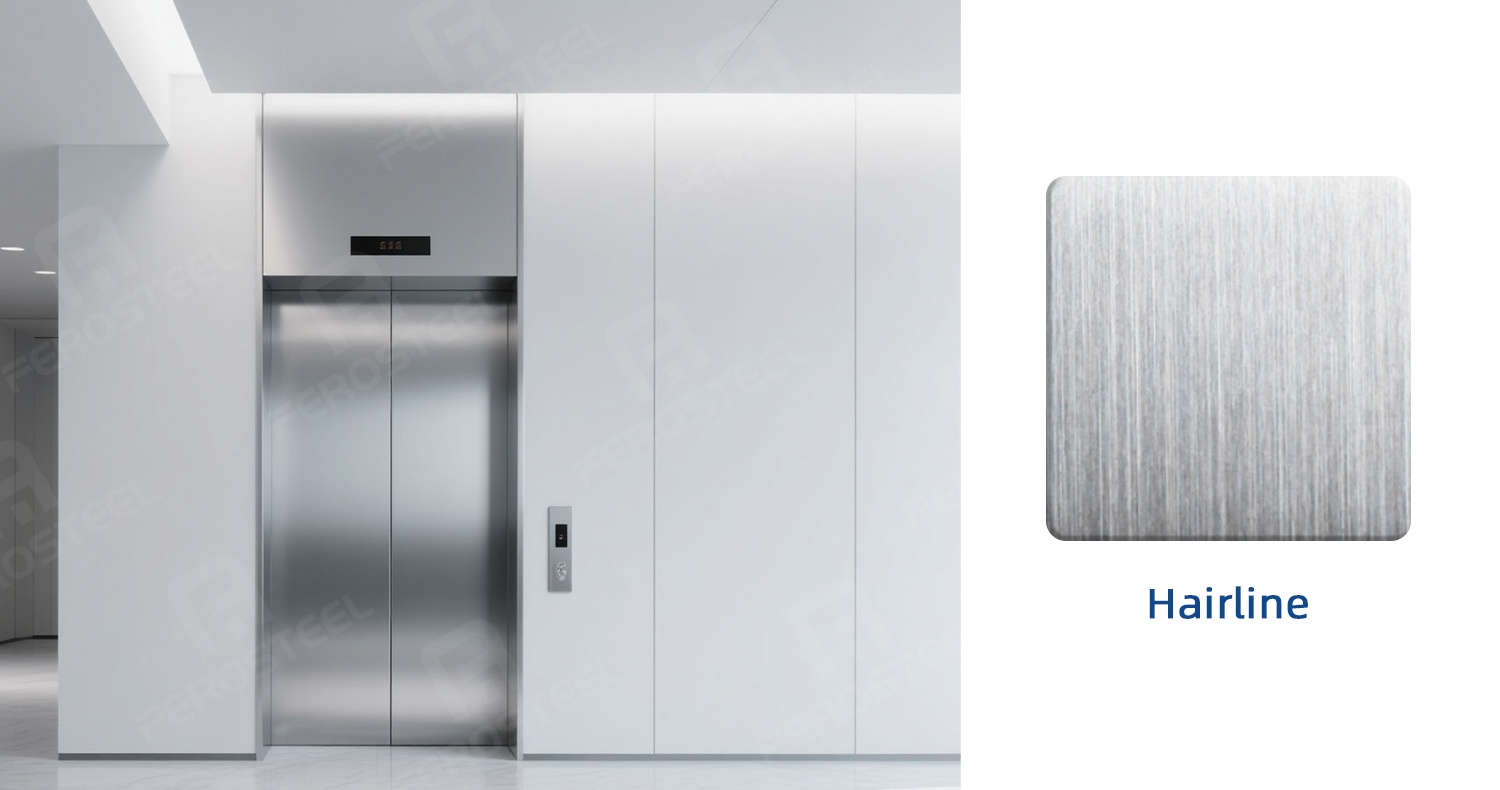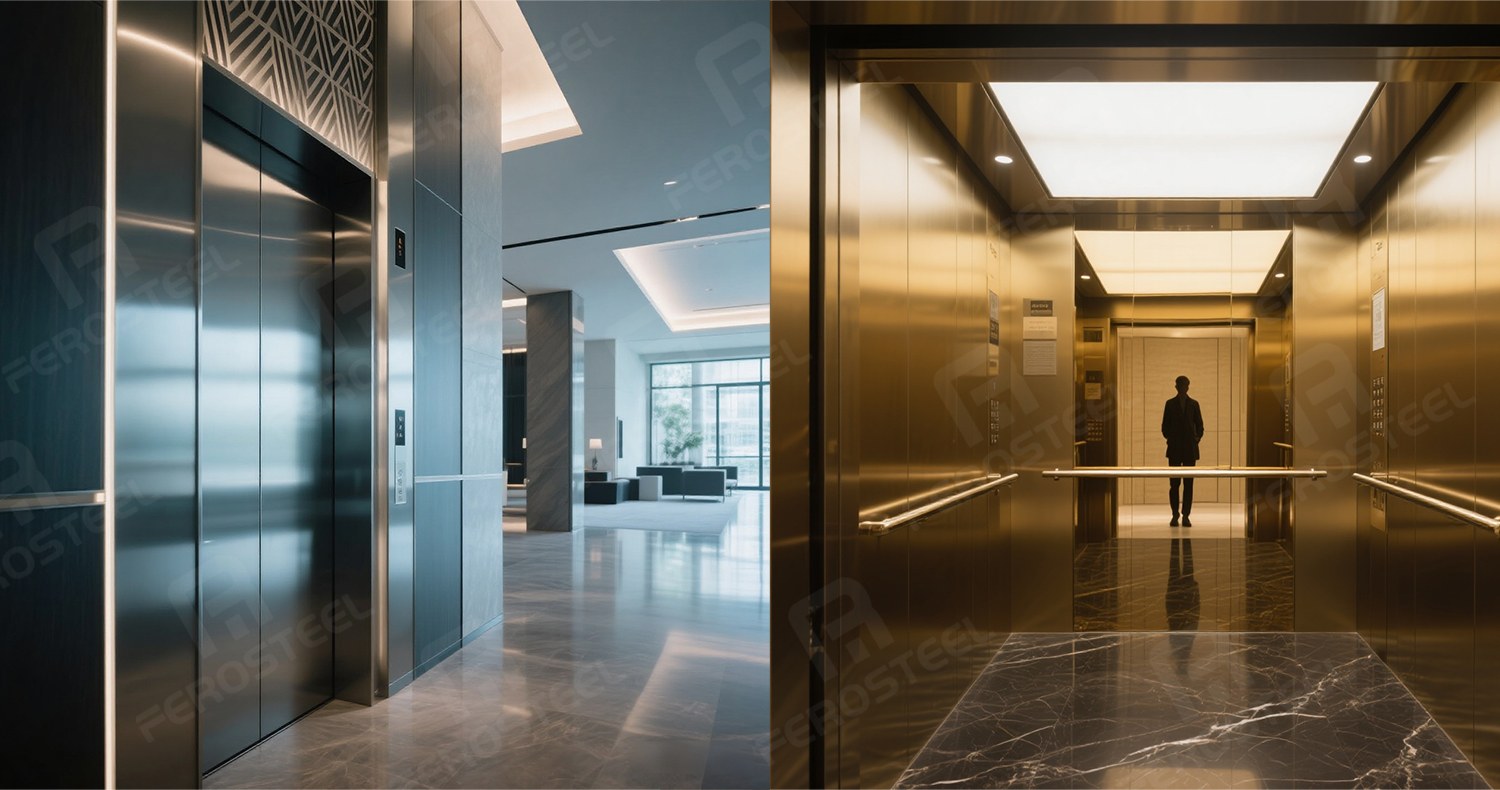En el mundo de la arquitectura moderna y el diseño de interiores, el acero inoxidable se ha convertido en uno de los materiales más versátiles y demandados. Entre sus numerosos tratamientos superficiales, láminas de acero inoxidable con efecto espejo y láminas de acero inoxidable cepillado Destacan como dos de los acabados más populares. Si bien ambos son duraderos, resistentes a la corrosión y estéticamente agradables, se adaptan a requisitos de proyecto muy diferentes.

Este artículo explora sus características, diferencias, aplicaciones y valor de mercado, ayudándole a decidir qué acabado es mejor para su próximo proyecto.
Las láminas de acero inoxidable con efecto espejo se crean mediante un proceso de pulido intensivo que transforma el acero inoxidable estándar en un superficie altamente reflectante, similar al vidrioEl proceso implica múltiples etapas de esmerilado y pulido con abrasivos más finos hasta que la superficie consigue un efecto espejo perfecto.
Alta reflectividad:Crea la ilusión de un espacio más grande y luminoso.
Apariencia de lujo:Perfecto para proyectos donde la estética es una prioridad.
Durabilidad:Resistente a la corrosión, manchas y daños ambientales.
Grados de materiales:A menudo fabricado a partir de 304 (para uso en interiores) y 316 (para ambientes exteriores o marinos).
Vestíbulos y áreas de recepción de hoteles de lujo
Cabinas de ascensor y puertas decorativas
Tiendas minoristas y salas de exposición de alta gama
Diseño de muebles e instalaciones artísticas
Revestimientos decorativos de paredes, techos y tabiques.
Las láminas de acero inoxidable con efecto espejo se utilizan ampliamente en proyectos donde impacto visual Es esencial. Por ejemplo, instalar paneles de espejo en ascensores crea una sensación de amplitud, mientras que su uso en interiores de lujo añade elegancia y sofisticación.
Láminas de acero inoxidable cepillado, por otro lado, presentan una textura mate, satinadaEn lugar de pulir para lograr el reflejo, la lámina pasa por debajo de bandas abrasivas para crear finas líneas paralelas que difunden la luz y reducen el resplandor.
Estética moderna:Proporciona un aspecto elegante, industrial y profesional.
Bajo mantenimientoOculta huellas dactilares, manchas y rayones mejor que el acabado de espejo.
Superficie duradera:Resistente al desgaste, lo que lo hace ideal para zonas de mucho tráfico.
Versatilidad:Disponible en diferentes patrones de cepillado (por ejemplo, veta recta, línea cruzada, vibración).

Cocinas y equipos comerciales
Electrodomésticos (frigoríficos, hornos, lavavajillas)
Puertas de ascensor y paneles interiores
Edificios de oficinas e interiores corporativos
Fachadas arquitectónicas y revestimiento de columnas
El acero inoxidable cepillado se prefiere en proyectos donde funcionalidad y practicidad Importa más que la alta reflectividad. Es la opción preferida en espacios públicos donde se necesitan reducir los costos de mantenimiento.
| Categoría | Láminas de acero inoxidable con efecto espejo | Láminas de acero inoxidable cepillado |
|---|---|---|
| Apariencia | Brillante, reflectante, lujoso. | Mate, sutil, moderno. |
| Mantenimiento | Muestra huellas dactilares fácilmente; requiere limpieza regular | Oculta marcas y arañazos; más fácil de mantener. |
| Durabilidad | Excelente resistencia a la corrosión | La misma durabilidad, pero mejor para disimular el desgaste. |
| Aplicaciones | Interiores de lujo, hoteles, salas de exposición, ascensores. | Cocinas, oficinas, fachadas, zonas de alto tránsito. |
| Costo | Ligeramente más alto debido al proceso de pulido. | Más rentable |
| Impacto del diseño | Crea una sensación de luminosidad y apertura. | Añade una elegancia profesional y discreta. |
Con la creciente demanda de Decoración de acero inoxidable personalizada, ambos acabados están evolucionando:
Tendencias en acabados de espejo:Se utiliza cada vez más en proyectos residenciales de lujo e interiores comerciales, a menudo combinado con Recubrimientos de color PVD (oro, oro rosa, negro, bronce) para crear un efecto moderno y artístico.
Tendencias de acabado cepilladoEstá ganando popularidad en la arquitectura sostenible gracias a su durabilidad y bajo mantenimiento. Los diseñadores suelen combinar acero inoxidable cepillado con madera, vidrio o piedra para lograr una sensación natural y moderna.

En Ferosteel, nosotros suministramos Láminas decorativas de acero inoxidable de alta calidad en acabados tanto espejo como cepillado.
Si su proyecto requiere glamour y estética de alta gama, como hoteles de lujo, villas o salas de exposición, recomendamos láminas de acero inoxidable con efecto espejo.
Si necesitas Durabilidad, practicidad y bajo mantenimiento, especialmente para cocinas, oficinas o áreas de mucho tráfico, láminas de acero inoxidable cepillado son la elección ideal.
También ofrecemos Acabados con recubrimiento PVD en varios colores, tamaños personalizados y servicios de corte profesionales para adaptarse a sus requisitos de diseño.
Ambos láminas de acero inoxidable con efecto espejo y láminas de acero inoxidable cepillado Ofrecen ventajas únicas. La elección depende de los objetivos de su proyecto:
Acabado de espejo: Ideal para lujo, brillo e impacto visual.
Acabado cepillado:Lo mejor por su practicidad, durabilidad y elegancia moderna.
Al seleccionar el acabado adecuado, puede equilibrar la estética con la funcionalidad y crear diseños hermosos y duraderos.
P1: ¿Qué es mejor para los ascensores, un espejo o láminas de acero inoxidable cepillado?
Ambos acabados son populares. El acabado espejo aporta elegancia y amplitud, mientras que el cepillado es más resistente a los arañazos y más fácil de mantener en condiciones de mucho tráfico.
P2: ¿Se pueden utilizar láminas de acero inoxidable con efecto espejo en exteriores?
Sí, especialmente con acero inoxidable de grado 316, que proporciona una resistencia superior a la corrosión en entornos exteriores y costeros.
P3: ¿Las láminas de acero inoxidable cepillado vienen en colores?
Sí. Usando Tecnología de recubrimiento PVDLas láminas cepilladas se pueden producir en oro, negro, bronce, oro rosa y otros acabados decorativos.
P4: ¿Qué acabado es más caro?
El acabado espejo suele ser más costoso debido a su laborioso proceso de pulido. Sin embargo, el costo exacto depende del espesor de la lámina, la calidad y el tratamiento de la superficie.
Q5: ¿Qué acabado es más fácil de limpiar?
El acabado espejo requiere una limpieza frecuente para mantener su brillo reflectante. El acabado cepillado es más resistente a las manchas y más fácil de mantener.
P6: ¿Qué espesor se recomienda para láminas de acero inoxidable cepillado y de espejo?
Los espesores comunes varían desde 0,3 mm – 2,0 mm, dependiendo de aplicaciones como revestimiento de paredes, techos, ascensores o diseño de muebles.
P7: ¿Hay tamaños personalizados disponibles?
Sí. En FerosteelOfrecemos ambos tamaños estándar (1220×2440 mm) y servicios de corte personalizados para adaptarse a las necesidades específicas del proyecto.
P8: ¿Ambos acabados proporcionan la misma durabilidad?
Sí, ambos son igualmente duraderos y resistentes a la corrosión. La principal diferencia radica en preferencia estética y necesidades de mantenimiento.
 Office address: 26 Floor, Shibo Financial Center, Fenjiang South Road No.38, Chancheng, Foshan, GuangDong, China
Office address: 26 Floor, Shibo Financial Center, Fenjiang South Road No.38, Chancheng, Foshan, GuangDong, China  Phone
: +86 -18024913898
Phone
: +86 -18024913898 Correo electrónico
: [email protected]
Correo electrónico
: [email protected] IPv6 RED SOPORTADA
IPv6 RED SOPORTADA
 dejar un mensaje
dejar un mensaje